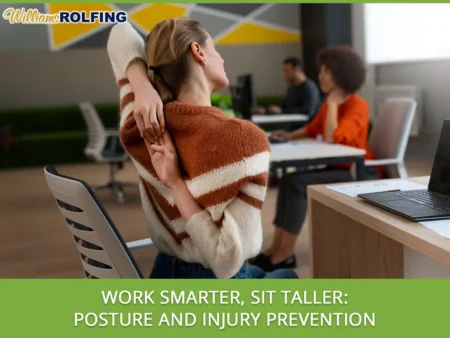October 1, 2025

In many modern workplaces, employees spend long hours seated at desks, typing on keyboards, or standing in repetitive positions. Over time, poor posture can contribute to chronic pain, tension, and increased risk of workplace injuries. As interest in holistic approaches to occupational health grows, some individuals in Tampa are turning to Rolfing to improve alignment and reduce the strain caused by everyday tasks. This article addresses frequently asked questions about posture, workplace safety, and how bodywork methods, such as Rolfing, can help employees achieve better health.
How does posture affect workplace health?
Posture is not just how you stand or sit. It affects how the body balances, distributes weight, and uses muscles during everyday tasks. Bad posture can put stress on the spine, shoulders, hips, and knees in an uneven way. This often manifests at work as neck pain from looking down at a screen, back pain from sitting without proper support, or leg fatigue from standing without appropriate alignment. Over time, these stresses can lead to injuries that make it challenging to work and ultimately harm your health.
Why are workplace injuries linked to posture so common?
In today’s workplaces, people often have to do tasks that can cause repetitive strain. Sitting for long periods, bending over a laptop, or standing on hard surfaces for hours can cause imbalances. Employees may not notice posture problems until they start to experience persistent discomfort, as these issues often develop gradually. These injuries occur over months or years, unlike sudden accidents. They are common, but workplace safety programs often fail to give them sufficient attention.
What role does body alignment play in injury prevention?
When the body is in the correct position, it can move more easily and with less effort. Muscles and joints are less likely to become overworked when the spine is supported, the shoulders are balanced, and the weight is evenly distributed. This reduces the risk of developing strains, tendon problems, and joint pain. Paying attention to alignment also helps with breathing and circulation, which makes you more resilient to physical stress.
How does Rolfing address posture concerns?
Rolfing is a type of manual therapy that works on the fascia, which are the connective tissues in the body. Practitioners employ hands-on methods to help clients relax, move more freely, and restore their bodies to a state of balance. Rolfing differs from regular massage in that it aims to reposition the body to support gravity better. For people who work, this can mean less stress on their spines and better ways of moving around. After sessions, many clients report feeling taller, lighter, and more at ease with their daily lives.
Can Rolfing reduce the risk of common workplace injuries?
Rolfing may reduce the risk of injuries caused by repetitive stress by improving posture and alignment. For instance, people who work in offices often develop sore necks from constantly looking down at their devices, and healthcare workers may experience sore lower backs from frequently lifting patients. Rolfing can help address the structural issues that cause these problems, allowing the body to function more efficiently. It may help with workplace wellness programs by addressing the physical causes of discomfort, but it is not a replacement for medical care.
What are simple posture tips that can be applied at work?
Employees can do small but important things throughout the day to help their posture: Move chairs and desks so that screens are at eye level.
- Adjust chairs and desks so that screens are at eye level.
- Keep feet flat on the floor to reduce strain on the lower back.
- Take breaks every hour to stretch and walk for a brief period.
- Relax your shoulders and avoid slouching forward during typing.
- Use supportive footwear when standing for extended periods.
These habits, combined with professional care such as Rolfing, can help you lead a healthier life and reduce your risk of injury.
How can employers support posture health?
It’s beneficial for businesses when their workers are comfortable and avoid injury. Employers can provide their workers with ergonomic tools, instruct them to take regular stretching breaks, and remind them to maintain proper body posture throughout the day. Some workplaces also have wellness programs that include bodywork sessions. Employers can reduce absenteeism and boost morale by increasing awareness of and access to helpful practices.
Posture plays a significant role in preventing workplace injuries. When alignment is compromised, employees are more vulnerable to strains, discomfort, and long-term issues. By practicing beneficial daily habits and seeking professional care, such as Rolfing, individuals can protect their health and enhance their workplace performance. For those in Tampa interested in exploring this approach, Williams Rolfing offers professional guidance and sessions tailored to occupational wellness.
Picture Credit: Freepik
